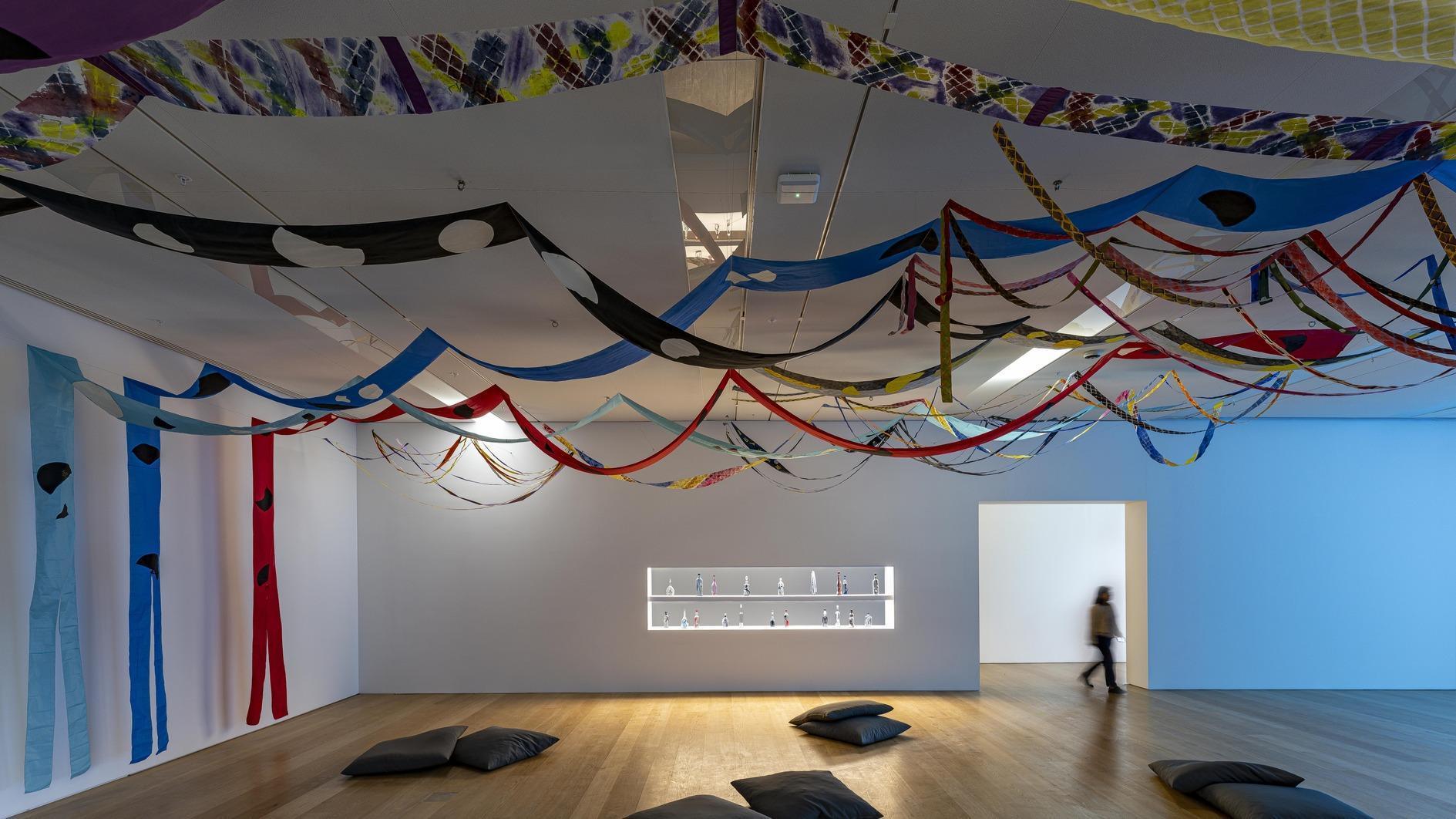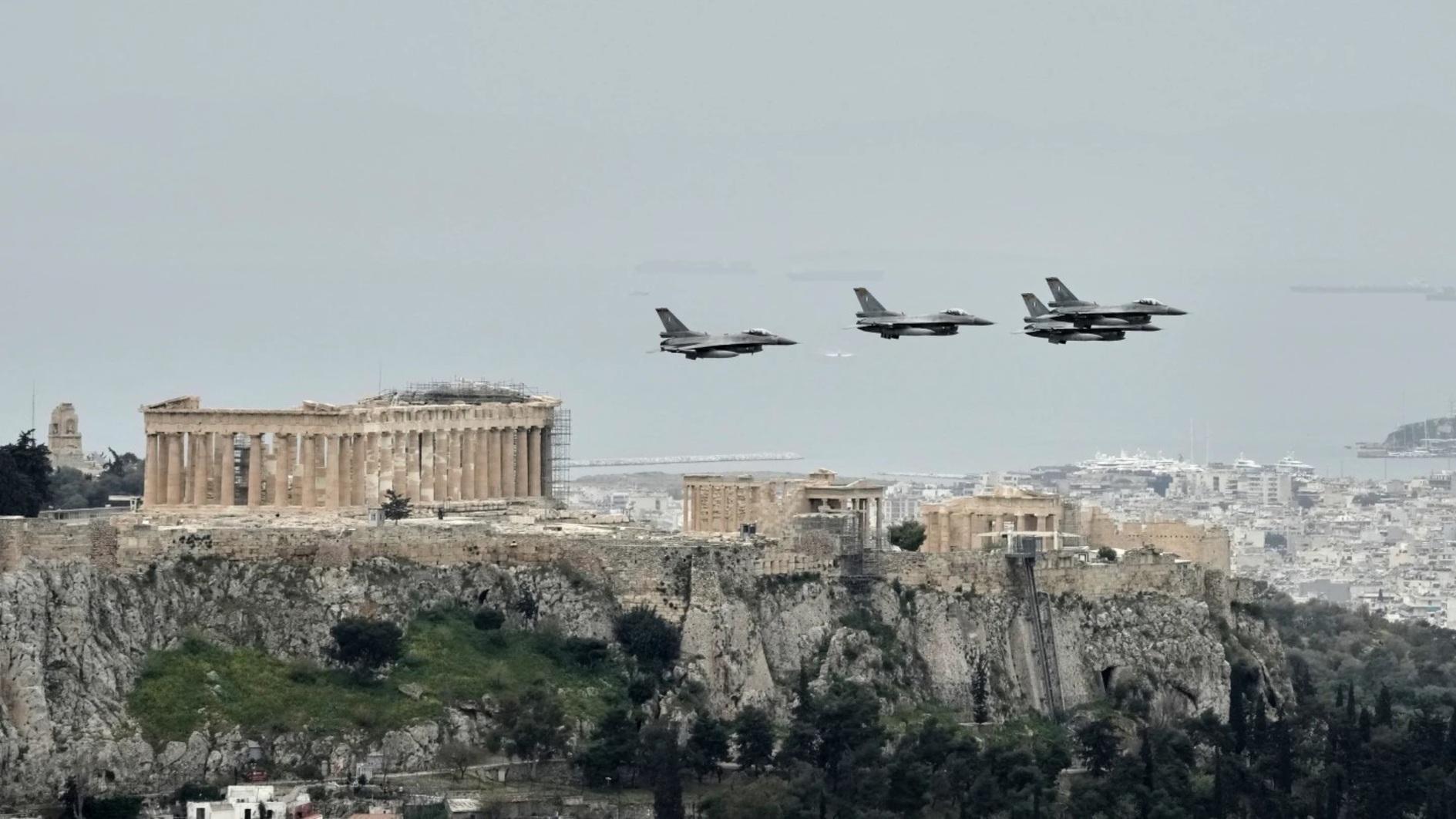Jackie Matisse’s kites fly in Arter
ISTANBUL

Arter presents the “Jackie Matisse: Kite Time” exhibition, spreading over its high and low, light and dark spaces where French artist Jackie Matisse’s kites can reveal themselves for the very first time in all their splendor indoors as they fly down from head to tail.
Matisse, who lived between 1931 and 2021, flew her signature kites in the skies over Istanbul almost half a century ago during a trip in 1976. Today, they appear in vivid colors inside the front windows of the Arter building and invite passers-by to come in and explore the exhibition, curated by Gill Eatherle.
The front windows show the Rainbow kites with their square heads. Wafting down the atrium, Black-and-White Kites (1989) contrast with the multi-colored Tangled Tails (1977) that disappear right down into the depths. Taking a side place in plain silk, hang Ahmedabad Silks (1981). Opposite these lines of striking colors is a white wall filled with light and space to hang 9 Lines and Reflections (1986), suspended aluminum shapes made for her collaboration with David Tudor.
A machine, positioned on the wall at the far end of the entrance corridor in Gallery -1, turns a paper tail in an endless moving loop of color from ceiling to floor, accompanied by soft creaking and swooshing sounds. Just nearby, presented on shelves, are Bottled Dreams [Rêves en Bouteille, 1981], fragments of kites made of found materials that swim and float in the water in different-sized bottles.
As visitors enter the darkened gallery space, they encounter Sea Tails (1983), a video captured by Molly Davies, with Jackie Matisse flying her kites underwater and David Tudor recording sounds from the ocean floor. Kites featured in the video are suspended across the ceiling as if they were coming out of the water.
On the way downstairs to Floor -3, Kite Time invites visitors to cast their gaze upward once more, where they will discover numerous small kites titled Flying Flea Circus (1979) made of spinnaker cloth fixed across a net, creating the impression of a giant mosaic.
Born into a family with a profound artistic heritage, Jackie Matisse seems to have paid no heed to her grandfather Henri Matisse’s advice from 1950, when he drew his three grandchildren on the ceiling of his apartment in Nice, France, on the occasion of his 80th birthday: “Don’t become an artist if you can do anything else. It is too difficult a road.”
Jackie Matisse’s journey began in 1962 when she accidentally lost a kite she had acquired among the trees in a forest – a fortuitous event that had a significant impact on her artistic path.
Drawing upon the delicate skills that she also honed from assisting Marcel Duchamp to assemble his portable miniature monograph Box in a Valise between 1959 and 1968, Jackie Matisse undertook a creative odyssey that spanned mediums and continents through clouds, underwater, across paper, wood and cloth surfaces, by using crayons and brushes.
She never stopped cutting, gluing, knotting, folding, sewing, assembling, printing, tying, drawing, sorting, collecting, soldering, and ultimately flying her kites, which she perceived as a dynamic form capable of setting art in motion across the world.
















